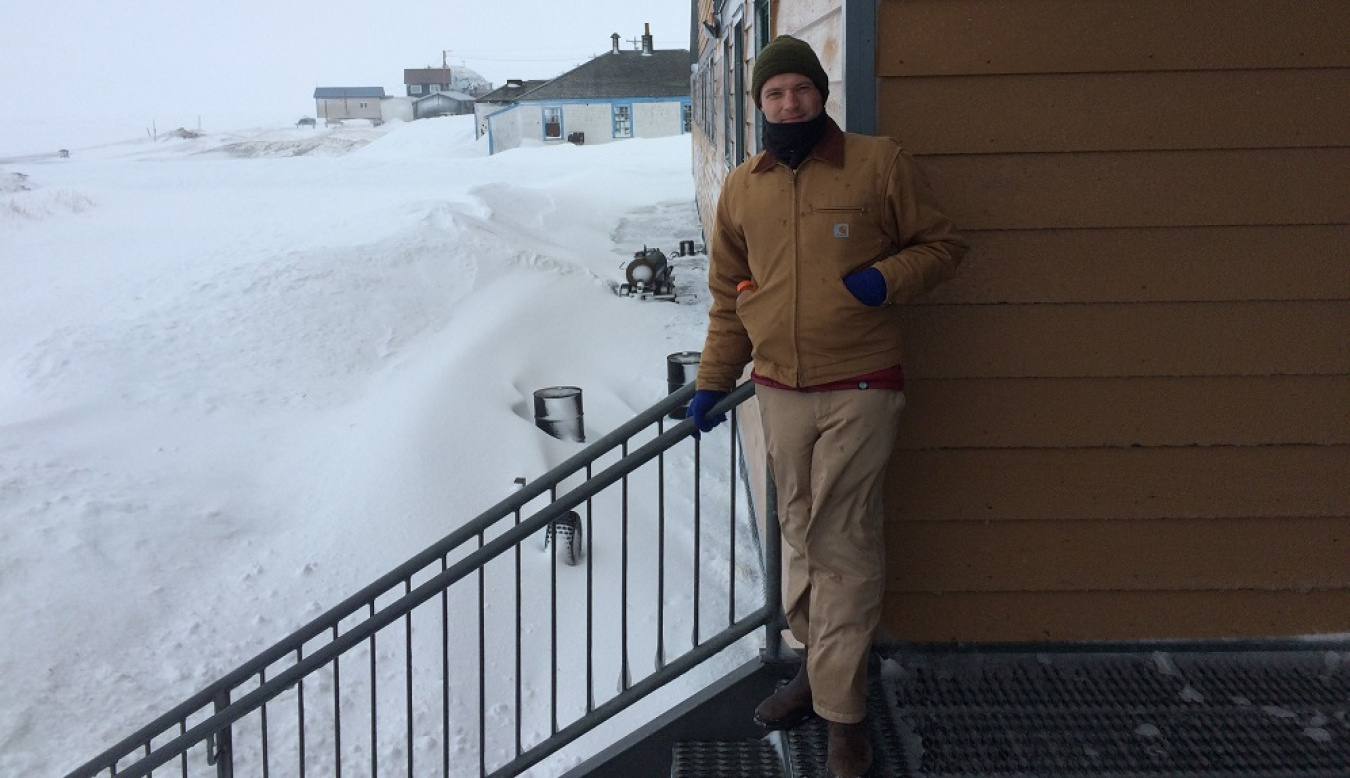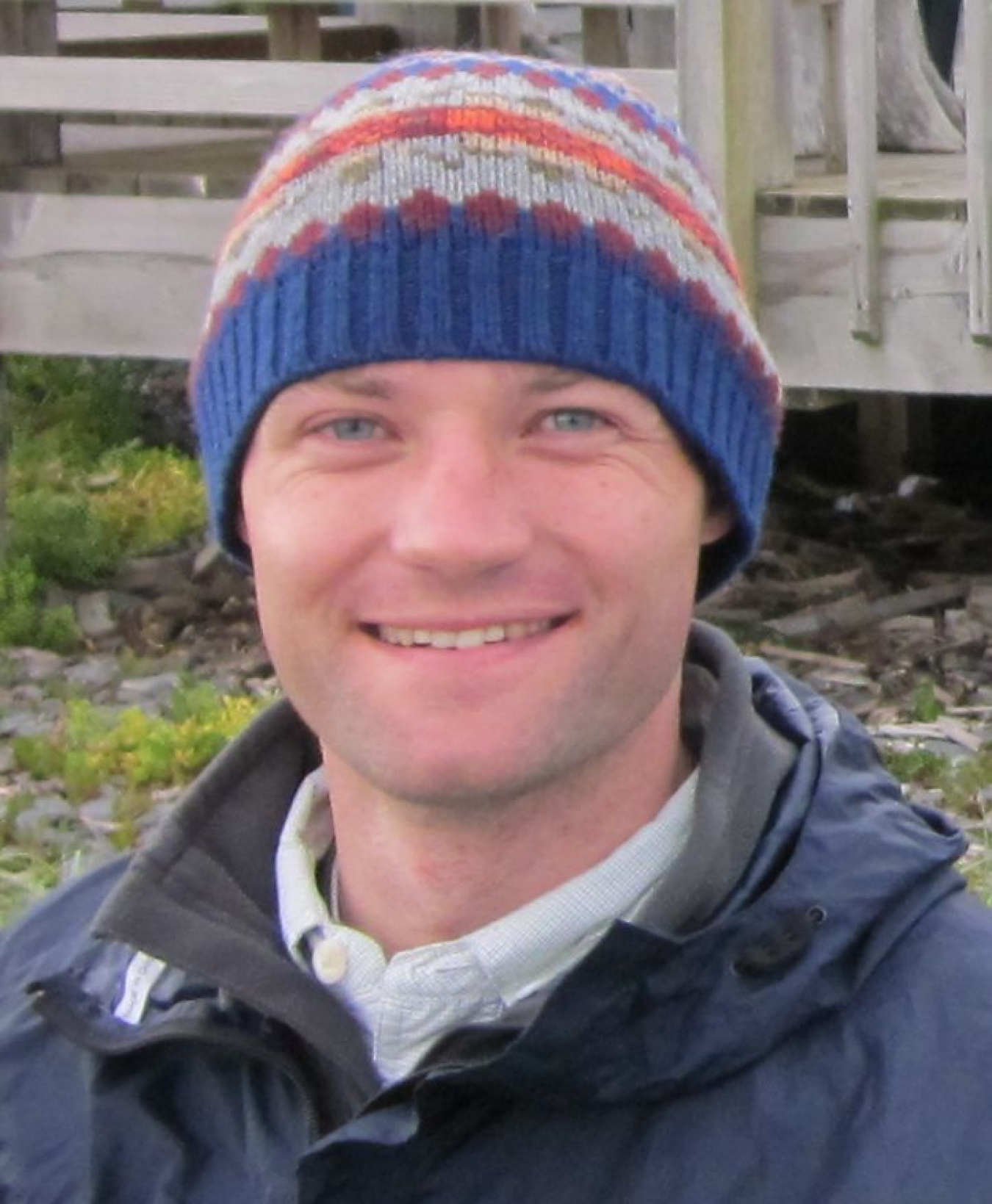Change doesn’t happen on its own. It’s led by dedicated and passionate people who are championing innovative solutions to Alaska’s energy cha...
Office of Indian Energy Policy and Programs
April 26, 2016
Change doesn’t happen on its own. It’s led by dedicated and passionate people who are championing innovative solutions to Alaska’s energy challenges. Alaska Energy Champions is a regular feature spotlighting pioneers of Alaska’s new energy frontier.

Name: Jed Drolet
Title/Role: Energy Information Analyst
Affiliation: Alaska Energy Authority
What is your role in championing tribal energy development in Alaska?
I work throughout the state primarily on regional energy planning and overseeing the community assistance and training programs at the Alaska Energy Authority (AEA). AEA is a public corporation of the State of Alaska with the mission to reduce the cost of energy in Alaska, and we have a variety of programs that work toward that goal in different ways. We work with all sorts of communities and entities throughout the state, but especially in rural areas a lot of our work is with tribes.
In what ways does the Office of Indian Energy help support your work with Alaska Native villages?
One of the major things we’ve partnered on is directing communities with issues that can be through the Office of Indian Energy’s on-request technical assistance to apply for it. This is an example of the way the AEA/DOE relationship can work best: AEA has close relationships with communities and can connect them with the resources available through DOE programs. This has become increasingly important as the budget situation for the State of Alaska has become more challenging and the resources available through AEA’s programs have diminished.
What motivates you to do the work you do?
I grew up in New Mexico, which has some similarities to Alaska in having a large Native population with many of the same challenges (as well as some different ones) and a complicated relationship to energy. Coming from that background, I’ve always had strong interests in both energy and Native American issues, and the work I do now is an ideal way to combine those interests while making a real difference in the lives of people who are dealing with a lot of major challenges on a daily basis.
How do you view the current energy challenges and opportunities for Alaska Native villages?
The challenges are what tend to get the most focus, and there are certainly a lot of them. I think one of the biggest with respect to energy is scale. In general, energy is an industry where economies of scale make a huge difference in costs. Rural Alaska communities tend to be both very small and far apart from each other, which really limits their ability to take advantage of economies of scale. As a result, costs are high—not just for energy but for everything, including projects to reduce energy costs such as through energy efficiency upgrades or integrating renewable energy.
That being said, I do think there are some real opportunities to address the high costs and overcome some of the scale problems. There has been a lot of innovative work with renewable integration in the past few years, and a lot of lessons learned that have allowed us to improve future projects and demonstrate new approaches. There has also been a lot of new thinking about how to pay for projects in an environment of greatly diminished state funding, and I think some of those ideas have a lot of promise.
Would you share a couple of examples?
One is to take greater advantage of loans. Traditionally, energy projects in Alaska have been funded primarily by state and federal grants, but as grant funding has become scarcer and more competitive, we’re starting to see more interest in debt financing [loans]. There are several public loan programs that have been in existence for a while but have seen relatively little use until recently, including AEA’s own Power Project Loan Fund and those of other state organizations, as well as federal agencies like the U.S. Department of Agriculture Rural Development loan programs. A lot of the energy projects in Alaska have strong economics and can reasonably be expected to pay for themselves over time, which means borrowing money to finance them may make sense. Also, the public loan programs provide a level of flexibility compared to traditional commercial finance that may make it easier to move projects forward.
We’re also seeing more interest in performance-based contracting, or the Energy Services Contracting Organization (ESCO) model, especially for energy efficiency projects, where a company will come in and do retrofits and get repaid from the savings. There are several large companies that do projects like this around the world, including some in Alaska, but there have been very few of these arrangements in rural Alaska yet, I believe primarily because of the scale issue. In the smaller communities the ESCO model may only work if a lot of small projects can be bundled together. There has been a lot of interest in piloting this approach.
There has also been interest in developing business models for smaller-scale performance contracting that might provide a business opportunity for local or regional organizations while allowing communities to save money. All of this discussion is in a fairly early stages at this point, but I think there’s a lot of opportunity to develop it further.
Describe a project you’re working on currently that is helping to address the energy challenges in Alaska.
The regional energy plans that we’ve been doing over the past few years have been particularly interesting. These are state-funded efforts in partnership with regional organizations throughout the state, and they’re intended to be useful tools for both the state itself and regional and local entities in establishing goals for addressing energy issues and potential projects to meet those goals. Especially with the recent decline in state funding, having a realistic picture of the current situation and what can be done to change it is essential to ensuring that we end up with good projects that really do what they are intended to do. The regional plans can also serve as a starting point for communities that want to do more focused planning using for example, DOE’s strategic energy planning assistance approach.
What’s your vision for the future of energy in rural Alaska?
I don’t think we’ll see any major, transformative change in the near future, but I’m hopeful that we’ll see continued improvements in local power systems, energy efficiency retrofits, higher standards for new buildings, and increasing use of renewable energy where it makes sense. One thing we’ve found through the regional planning work is that there’s really no silver bullet.
The energy challenges in rural Alaska are genuinely difficult problems without easy solutions. There are, however, things we can do to improve the situation, especially when stakeholders work together to pool resources and learn from each other’s experiences.
What do you see as being necessary to drive meaningful change?
Collaboration is key, I think. Especially these days, no one entity is going to be able to make a meaningful difference on its own. If we work together, though, we can achieve a lot even in difficult times.

